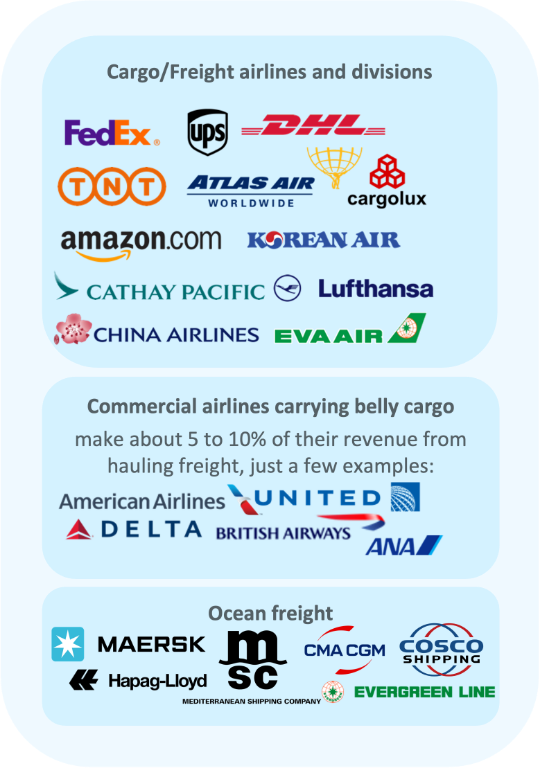
Cargo and passenger balance on delivering products
International air cargo has experienced a market shift from traditional pre-covid 50/50 balance between passenger flight belly cargo and full freighter platform. Present market conditions have shifted to 70%+ full freighter with balance passenger flight belly cargo fluctuating and very sensitive to consumer booking variations.
International passenger flights remain well below pre-covid schedules. Depending on region, total available passenger flights and available belly cargo capacity is 60% below 2019 levels. Industry-wide cargo load factor in July 2021 grew by 9.5% compared to the same month in 2019, to reach 54.4%. This record-high for the month of July in any preceding year, shows market dynamics of demand continue to outstrip available air freight capacity.
The top twenty-five global air cargo carriers as measured by Cargo Tonne Kilometer (CTK) include passenger airlines that also operate cargo divisions, as well as dedicated air cargo companies that do not offer passenger services. Total capacity dropped 2018-2020 as these ranking figures include passenger flight belly cargo, which is a category heavily impacted by reduced passenger flights from the global Covid-19 border closure response.
Revenue profiles IATA reports show international passenger airlines financial losses were offset to a degree through repurposing passenger aircraft on a temporary basis for use in air cargo.
These efforts generally involve removal of the cabin seats and installation of cargo netting to secure items stowed in the second deck area. This configuration is not optimal due to a number of reasons as well as available aircraft load factor relative to that of a full freighter platform.
 .
.